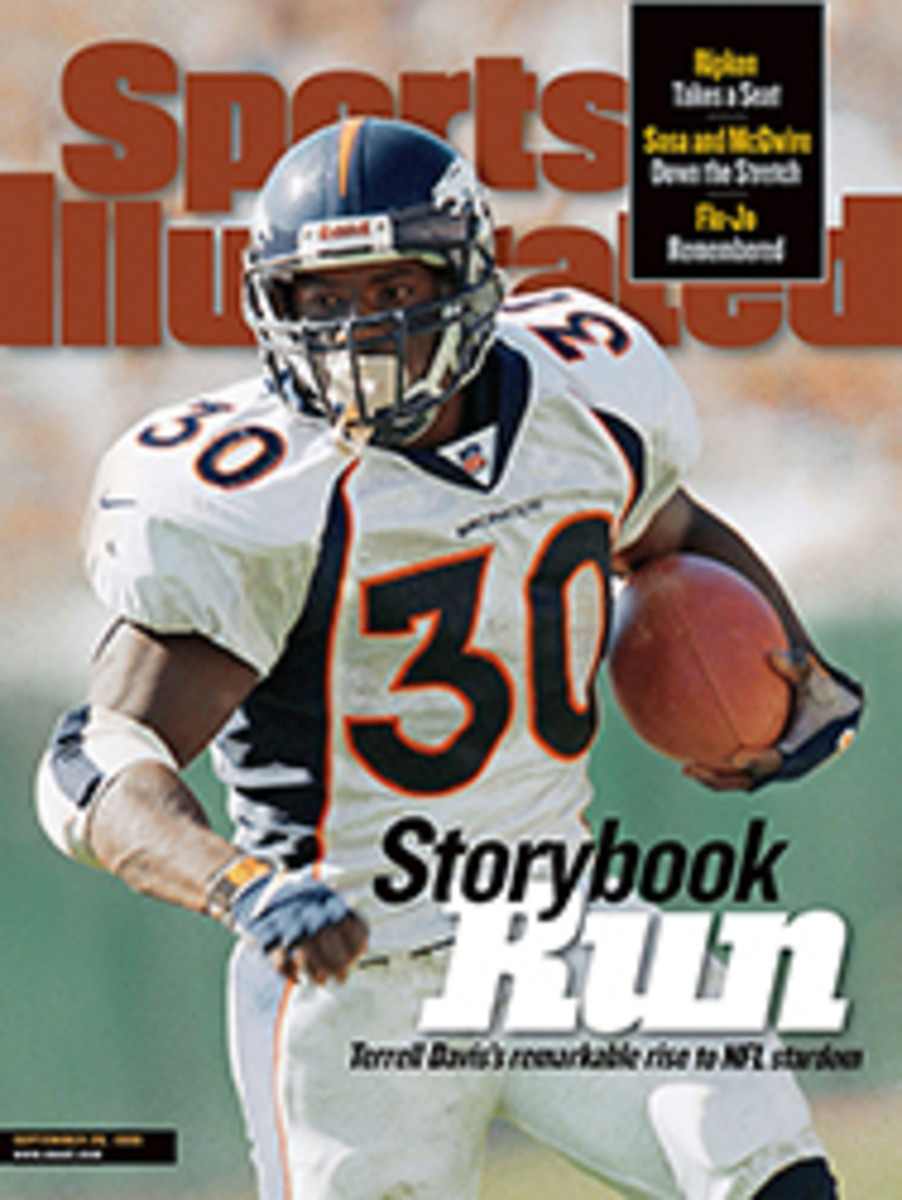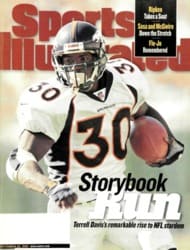
The Purloined Homer
On Sunday afternoon Mark McGwire of the St. Louis Cardinals
launched a monumental 392-foot asterisk toward the
left-centerfield bleachers in Milwaukee's County Stadium. As it
descended, some spectators reached out and tried to grab the
ball. Second base umpire Bob Davidson (right) immediately ruled
fan interference, and McGwire wound up on second with a mere
double, instead of what many felt should have been home run
number 66.
The two spectators who claim to have touched the ball as it
landed, Michael Chapes, 31, of Waterford, Wis. (far right,
sunglasses), and Allen Riesbeck, 45, of Dubuque, Iowa (far
right, shirtless), both insist that it cleared the wall before
they made contact with it. However, when the Brewers returned to
their dugout after that inning, leftfielder Darrin Jackson told
centerfielder Marquis Grissom that he believed the ball had not
been a home run. Grissom, who says that the tiered wall at
County Stadium has caused about 10 similar disputes this season,
said, "I'm not 100 percent sure. And if I can't see it from 20
feet away, then that's a very tough call for the umpire."
Davidson, a 16-year veteran with a reputation for calling far
more balks than any other National League ump, didn't balk at
making the most important decision of his career. "The ball got
out there in about half a second," Davidson said after the game.
"I got out there as fast as I could. The fan was leaning over,
and the ball hit him below the yellow line [painted along the
bleacher railing, above which a ball must land to be a homer]. I
could care less if he hits 150 home runs. As an umpire you can't
get caught up in that."
Moments after the game McGwire watched the replay twice in the
St. Louis clubhouse and concluded, "Upon further review, it
looked like a home run."
The Cardinals asked the National League office to reverse the
call, an appeal which was denied, as expected, on Monday by
league president Leonard Coleman. "We may look back on this as a
pivotal moment in baseball history," Cardinals catcher Tom
Lampkin said late Sunday. "Who knows? This could turn out to be
the homer that decides the record."
Among those who hope the controversy continues to escalate is
Johnny Luna, an 18-year-old from Queens, N.Y., who wound up with
the ball. Luna and four friends had left New York City on
Thursday afternoon and had driven 24 hours straight, to Chicago,
to witness the final 10 days of the home run duel. After
shuttling between games in Chicago (where the Cubs were playing
the Reds, page 44) and Milwaukee on Friday and Saturday, they
remained in Milwaukee on Sunday and bought five bleacher seats
for a total of $4. An hour after Luna grabbed the ball, one
friend, 40-year-old Gerald DiGilio, said the group planned to
sell it to the highest bidder--a clear case of the national
pastime meeting the American way. "We drove all the way out here
to see history, and we became a part of it," said DiGilio, the
ball bulging in his pants pocket. "Maybe it's a home run ball.
Maybe it ain't. But it ought to be worth millions as the homer
that didn't count. Heck, we may never go back to Queens. We may
go straight to the Bahamas."
--Tim Crothers
COLOR PHOTO: JOHN BIEVER [Mark McGwire, catcher, and umpire looking up after McGwire's swing]
COLOR PHOTO: JIM GEHRZ/MILWAUKEE JOURNAL SENTINEL [Fans in stands with gloves reaching for ball above outfield wall]
COLOR PHOTO: DAN CURRIER/REUTERS [Bob Davidson beside Mark McGwire on second base]

